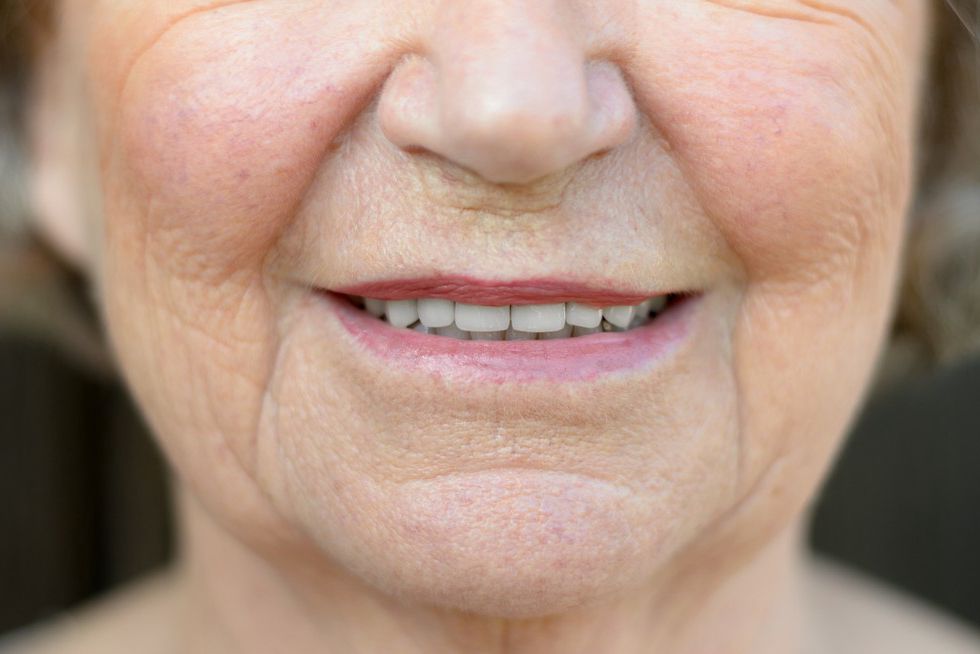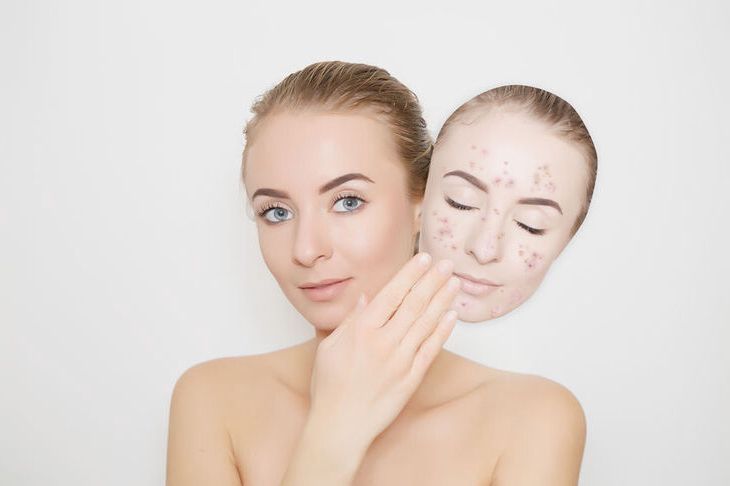Adapalen na zmarszczki - Skuteczne leczenie i porady dotyczące pielęgnacji skóry
Properties
| Property | Value | Source |
|---|---|---|
| melting point (°C) | 300 | http://datasheets.scbt.com/sds/aghs/en/sc-203803.pdf |
| boiling point (°C) | 606.3 | http://datasheets.scbt.com/sds/aghs/en/sc-203803.pdf |
| logP | 6.917 | http://www.chemspider.com/Chemical-Structure.54244.html?rid=2edd1b0e-994a-4cdc-870c-186c62dcad5a&page_num=0 |
| Property | Value | Probability |
|---|---|---|
| Human Intestinal Absorption | + | 1.0 |
| Blood Brain Barrier | + | 0.7061 |
| Caco-2 permeable | + | 0.8439 |
| P-glycoprotein substrate | Non-substrate | 0.5408 |
| P-glycoprotein inhibitor I | Non-inhibitor | 0.8074 |
| P-glycoprotein inhibitor II | Inhibitor | 0.5 |
| Renal organic cation transporter | Non-inhibitor | 0.8646 |
| CYP450 2C9 substrate | Non-substrate | 0.7171 |
| CYP450 2D6 substrate | Non-substrate | 0.8925 |
| CYP450 3A4 substrate | Non-substrate | 0.5116 |
| CYP450 1A2 substrate | Non-inhibitor | 0.7812 |
| CYP450 2C9 inhibitor | Inhibitor | 0.7758 |
| CYP450 2D6 inhibitor | Non-inhibitor | 0.9466 |
| CYP450 2C19 inhibitor | Non-inhibitor | 0.653 |
| CYP450 3A4 inhibitor | Non-inhibitor | 0.8246 |
| CYP450 inhibitory promiscuity | Low CYP Inhibitory Promiscuity | 0.8509 |
| Ames test | Non AMES toxic | 0.8575 |
| Carcinogenicity | Non-carcinogens | 0.8707 |
| Biodegradation | Not ready biodegradable | 0.9715 |
| Rat acute toxicity | 2.6913 LD50, mol/kg | Not applicable |
| hERG inhibition (predictor I) | Weak inhibitor | 0.9774 |
| hERG inhibition (predictor II) | Non-inhibitor | 0.8855 |
Domowe sposoby i ćwiczenia na bruzdy marionetki
Kiedy już linie marionetkowe się pojawią, kremy przeciwzmarszczkowe warto zamienić na silniej działające kremy liftingujące, przeznaczone dla kobiet dojrzałych. W ich składzie szukajcie między innymi peptydów miedziowych, śluzu ślimaka, koenzymu Q10. Nietypową, ale skuteczną propozycją są kremy z jadem żmii, a dokładniej – z neuropeptydem naśladującym jego działanie wygładzające.
Dzięki regularnemu masowaniu twarzy i ćwiczeniu jej mięśni zmarszczki marionetki pojawią się później, a te już istniejące będą płytsze. Masaż twarzy (polecamy zwłaszcza masaż kobido) i jej ćwiczenie poprawia ogólny stan skóry i wzmacnia mięśnie, od których elastyczności także zależy wygląd naszej twarzy i głębokość zmarszczek. Świetnym wyborem będzie również joga twarzy, do tego najlepiej sprawdzi się pozycja o nazwie „rozciągnięty uśmiech”! Spróbujcie też prostego ćwiczenia na zmarszczki marionetki, a mianowicie nadymania policzków: nabierzcie powietrza, zatrzymajcie je na 10 sekund i wypuśćcie.
Pomocne będą łatwo dostępne masażery do twarzy, wśród których najpopularniejsze są wałeczki jadeitowe i kwarcowe. Dobrym wyborem będzie również kamień gua sha czy – niestety o wiele droższe, ale wyjątkowo skuteczne – soniczne masażery. Emitują one wibracje, które doskonale masują mięśnie i skórę, nierzadko też pobudzają syntezę kolagenu poprzez oddziaływanie falami radiowymi. Musicie mieć jednak na uwadze, że tego typu gadżety pomogą tylko wtedy, gdy będą stosowane systematycznie. Dlatego najlepiej każdego dnia poświęćcie choć kilka minut na wykonanie nimi masażu twarzy.

Side Effects
What are the most common side effects of adapalene?
- Skin irritation such as redness, itching, burning, or stinging
- Dry, flaky skin
What are the serious side effects of adapalene?
While less common, the most serious side effects of adapalene are described below, along with what to do if they happen.
Severe Allergic Reactions. Adapalene can cause allergic reactions , which can be serious. Stop using adapalene and get help right away if you have any of the following symptoms of a serious allergic reaction.
Skin Reaction. Skin reactions are usually not severe, and decrease with continued use of adapalene. You may need to use moisturizers, decrease how often you apply adapalene, or stop using it if you have trouble tolerating treatment.
Zmarszczki marionetki – jak powstają i jak się ich skutecznie pozbyć? Domowe sposoby i zabiegi
Zmarszczki marionetki, inaczej zmarszczki smutku, to nieuchronny skutek starzenia się skóry, która traci jędrność i poddaje się działaniu grawitacji. Stosując odpowiednią pielęgnację, można odsunąć w czasie ich powstanie oraz zmniejszyć ich głębokość. Sprawdźcie, jakie są skuteczne sposoby na zapobieganie bruzdom marionetki i metody ich spłycenia.
Zmarszczki marionetki są bardzo trudne do usunięcia i w zasadzie pozbyć się ich można tylko z pomocą specjalisty medycyny estetycznej i intensywnej pielęgnacji. Dlatego tak ważne jest zapobieganie ich powstawaniu. A pomogą w tym kosmetyki ze składnikami zapobiegającymi wiotczeniu skóry i zwiększającymi jej elastyczność oraz masaże twarzy i ćwiczenie jej mięśni.
Spis treści:

Pharmacoeconomics
- Nycomed us inc
- Galderma laboratories lp
- Glenmark generics inc usa
- Pliva hrvatska doo
- Galderma research and development inc
- Galderma Laboratories
| Form | Route | Strength |
|---|---|---|
| Gel | Topical | |
| Cream | Cutaneous | 0.100 g |
| Gel | Cutaneous | 0.300 g |
| Cream | Topical | 0.1 g/100g |
| Cream | Topical | 1 mg/1g |
| Gel | Topical | 0.1 g/1g |
| Gel | Topical | 1 mg/1g |
| Gel | Topical | 45 g/1g |
| Lotion | Topical | .1 g/100mL |
| Gel | Topical | 0.00036 g/1g |
| Swab | Topical | 1 mg/1mL |
| Cream | Topical | |
| Gel | ||
| Gel | Topical | 0.100 g |
| Kit | Topical | |
| Gel | Cutaneous | 0.1 % w/w |
| Gel | Topical | 1.00 mg/g |
| Cream | Topical | 0.1 % |
| Gel | Topical | 0.1 % |
| Gel | Topical | 0.1 %w/w |
| Gel | Topical | 3 mg/1g |
| Liquid | Topical | 0.1 % |
| Lotion | Topical | 0.1 g/100mL |
| Lotion | Topical | 0.1 % |
| Lotion | Topical | 1 mg/1g |
| Solution | Topical | 1 mg/1mL |
| Gel | Topical | 1 mg/g |
| Cream | Cutaneous | 0.1 % |
| Gel | Topical | 0.3 % |
| Gel | Topical | |
| Gel | Cutaneous | |
| Gel | Topical | 0.10 % |
| Cream | ||
| Solution | Topical | |
| Gel | Cutaneous | 0.100 g |
| Gel | Cutaneous | 1.000 MG |
| Gel | Topical | 0.1 % W/W |
| Gel | Topical | 0.1 g/100g |
| Gel | Cutaneous | 0.1 % |
| Gel | Cutaneous | 110.000 mg |
| Cream | Topical | 0.3 g |
| Gel | Cutaneous | 0.100 g |
| Cream | Topical | |
| Cream | Topical | 0.1 g |
| Gel | Topical | 0.3 g |
| Gel | Topical | 0.1 g |

 U nas zapłacisz kartą
U nas zapłacisz kartą
